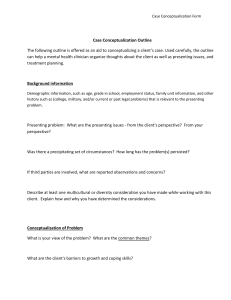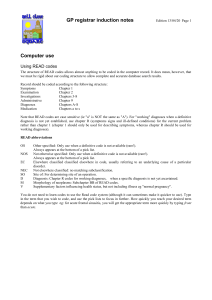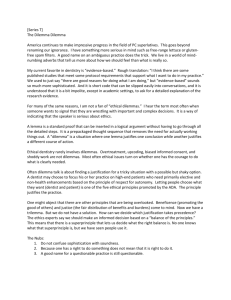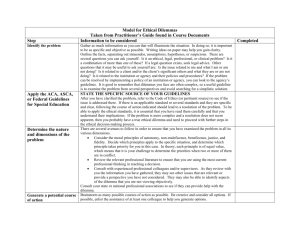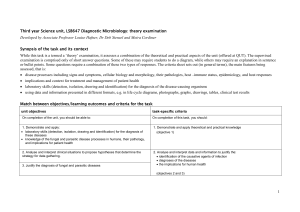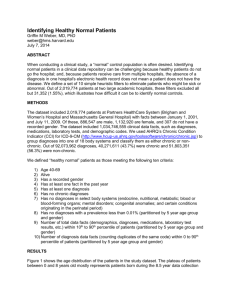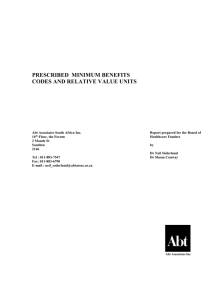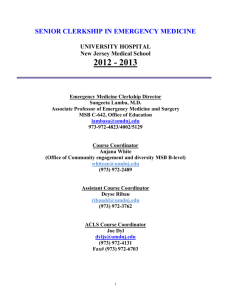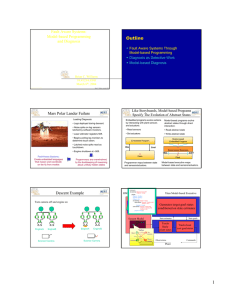Master`s Comprehensive Exam Directions with a Sample Clinical
advertisement
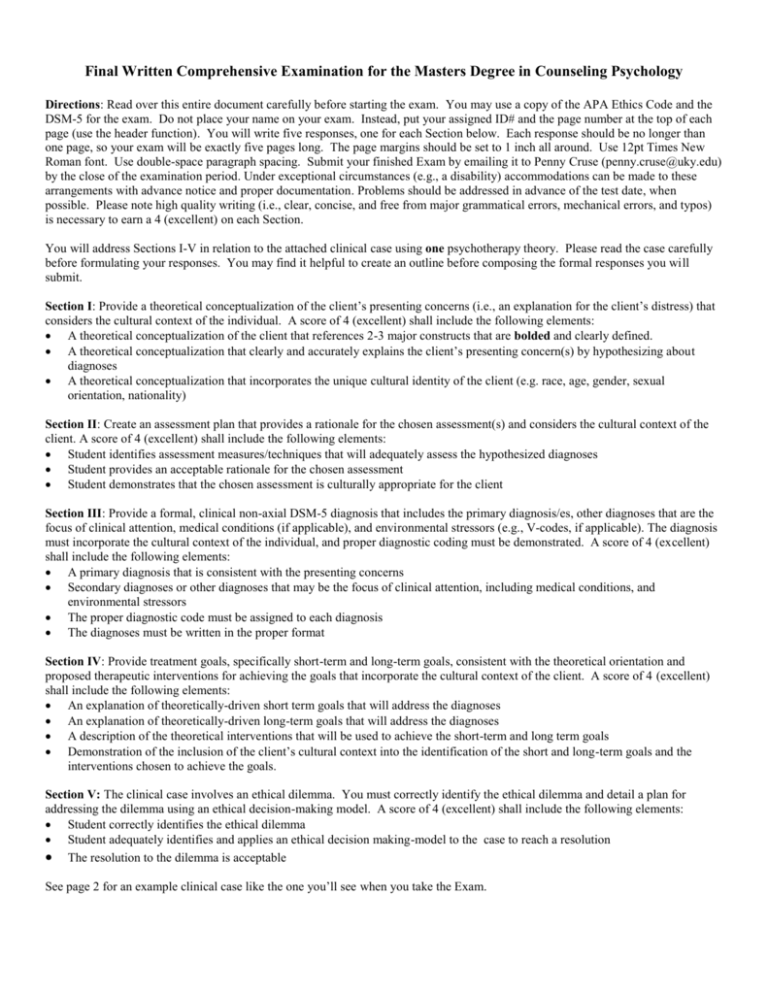
Final Written Comprehensive Examination for the Masters Degree in Counseling Psychology Directions: Read over this entire document carefully before starting the exam. You may use a copy of the APA Ethics Code and the DSM-5 for the exam. Do not place your name on your exam. Instead, put your assigned ID# and the page number at the top of each page (use the header function). You will write five responses, one for each Section below. Each response should be no longer than one page, so your exam will be exactly five pages long. The page margins should be set to 1 inch all around. Use 12pt Times New Roman font. Use double-space paragraph spacing. Submit your finished Exam by emailing it to Penny Cruse (penny.cruse@uky.edu) by the close of the examination period. Under exceptional circumstances (e.g., a disability) accommodations can be made to these arrangements with advance notice and proper documentation. Problems should be addressed in advance of the test date, when possible. Please note high quality writing (i.e., clear, concise, and free from major grammatical errors, mechanical errors, and typos) is necessary to earn a 4 (excellent) on each Section. You will address Sections I-V in relation to the attached clinical case using one psychotherapy theory. Please read the case carefully before formulating your responses. You may find it helpful to create an outline before composing the formal responses you will submit. Section I: Provide a theoretical conceptualization of the client’s presenting concerns (i.e., an explanation for the client’s distress) that considers the cultural context of the individual. A score of 4 (excellent) shall include the following elements: A theoretical conceptualization of the client that references 2-3 major constructs that are bolded and clearly defined. A theoretical conceptualization that clearly and accurately explains the client’s presenting concern(s) by hypothesizing about diagnoses A theoretical conceptualization that incorporates the unique cultural identity of the client (e.g. race, age, gender, sexual orientation, nationality) Section II: Create an assessment plan that provides a rationale for the chosen assessment(s) and considers the cultural context of the client. A score of 4 (excellent) shall include the following elements: Student identifies assessment measures/techniques that will adequately assess the hypothesized diagnoses Student provides an acceptable rationale for the chosen assessment Student demonstrates that the chosen assessment is culturally appropriate for the client Section III: Provide a formal, clinical non-axial DSM-5 diagnosis that includes the primary diagnosis/es, other diagnoses that are the focus of clinical attention, medical conditions (if applicable), and environmental stressors (e.g., V-codes, if applicable). The diagnosis must incorporate the cultural context of the individual, and proper diagnostic coding must be demonstrated. A score of 4 (excellent) shall include the following elements: A primary diagnosis that is consistent with the presenting concerns Secondary diagnoses or other diagnoses that may be the focus of clinical attention, including medical conditions, and environmental stressors The proper diagnostic code must be assigned to each diagnosis The diagnoses must be written in the proper format Section IV: Provide treatment goals, specifically short-term and long-term goals, consistent with the theoretical orientation and proposed therapeutic interventions for achieving the goals that incorporate the cultural context of the client. A score of 4 (excellent) shall include the following elements: An explanation of theoretically-driven short term goals that will address the diagnoses An explanation of theoretically-driven long-term goals that will address the diagnoses A description of the theoretical interventions that will be used to achieve the short-term and long term goals Demonstration of the inclusion of the client’s cultural context into the identification of the short and long-term goals and the interventions chosen to achieve the goals. Section V: The clinical case involves an ethical dilemma. You must correctly identify the ethical dilemma and detail a plan for addressing the dilemma using an ethical decision-making model. A score of 4 (excellent) shall include the following elements: Student correctly identifies the ethical dilemma Student adequately identifies and applies an ethical decision making-model to the case to reach a resolution The resolution to the dilemma is acceptable See page 2 for an example clinical case like the one you’ll see when you take the Exam. Example Clinical Case The client is a 21 year old, African-Asian philosophy student in his senior year. He is very anxious about what he will be doing next year, after he graduates. He says he wants help for “job direction.” His parents sent him to a Career Placement Center, where he was given a battery of tests, including the Strong Interest Inventory. The counselor told him he would probably have to choose between being unemployed or going back to school for at least another year, since he should be looking for a career in Library Science, as the Strong indicates. He has neither training nor experience in that area, nor any real desire to enter that vocation. He says, “Great!! My parents pushed me to be premed. I can just hear what they’re going to say about this news. They said once I’m through with this year, I’m on my own.” You ask if you can see his assessments. He says “I asked the other counselor for them, but I was told I couldn’t have them unless I paid for them.”
